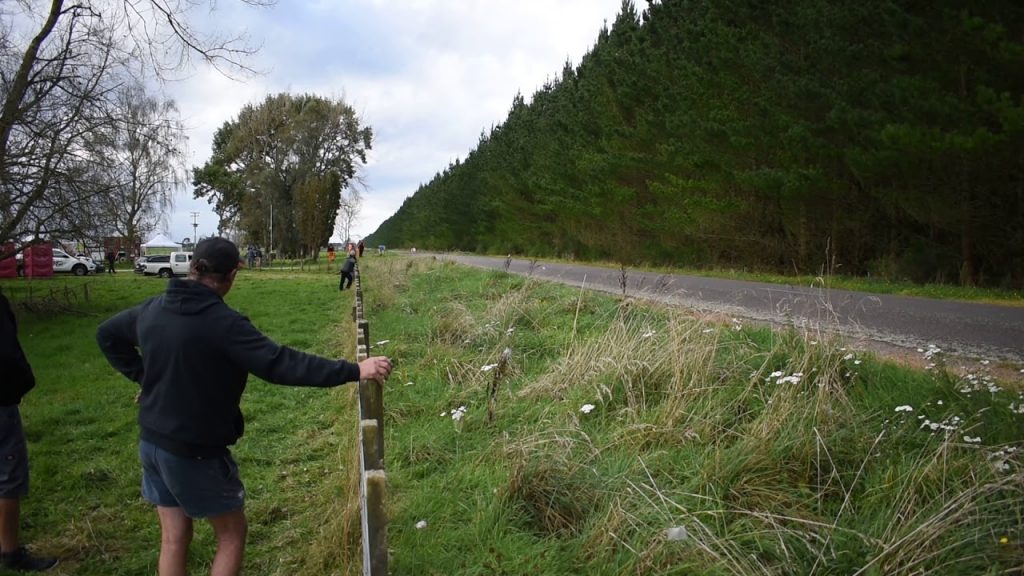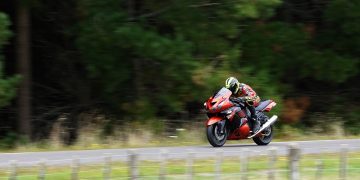A plan by the Rotorua council to chipseal Goudies Road is causing concern for the New Zealand Land Speed Association, who use the road for their events.
The seven-kilometre Goudies Road near Reporoa was where Ray Williams and Owen Evans set outright New Zealand land speed records in 1996.
Williams directed President of the Land Speed Association John Seccombe to use the road for his events.
John (as he prefers) has since co-ordinated three land speed events on Goudies Road. The fourth is scheduled to be in February 2022.
However, the Rotorua Council are planning to chipseal the road over summer.
John says this would make Goudies Road too dangerous to hold land speed runs on.
“It would cause accidents,” John said.
John has raised his concern with the Rotorua Council about chipsealing being unnecessary and detrimental to land speed racing.
He says the council told him he would need to raise $1.2 million to have the road sealed with asphalt. It would cost the council roughly $180,000 to chipseal the road.
Rotorua council’s infrastructure and environmental solutions deputy chief executive Stavros Michael confirmed those prices to Velocity News.
Michael said the cost of asphalt is nearly seven times the price of chipseal per square metre.
He says laying asphalt on Goudies Road would impose a higher cost for the local ratepayers.
Michael said the New Zealand Transport Association (NZTA) would not subsidise using asphalt on the road as it is not a justified cost for the council.
He did acknowledge chipseal is not as luxurious as asphalt, but it is “effective” and would “protect [the road’s] foundations.”
He added the council are open to using asphalt if someone forks up the necessary money.
Should that not be the case, the council will begin chipsealing Goudies Road in the summer.

Fulton Hogan has offered to pay for half of the $1.2 million the Land Speed Association needs for asphalt. A remaining $650k John will have to fund.
John has recently been in discussion with the Rotorua Lakes Council to see what else can be done to keep everyone satisfied.
He has spoken with consultant engineers in the region the last few days who will assist in his claims to the council.
Engineers John has spoken to are primarily in agreement that chipseal would be bad for Goudies Road.
The lack of traffic would lift the road surface, and the chipseal would rip up when farm trucks and tractors turn off the road.
The local Police, who sponsor the land speed events, have also agreed chipseal is not needed.

Goudies Road was a part of the Million Dollar Highway used by logging trucks to carry wood to and from the Kaingaroa Forest.
The road was built to handle 120-tonne logging trucks. It is seven metres wide and has over a metre depth of compacted rock.
It is three times thicker than State Highway 1 in some places.
For 2.7kms, the road is entirely flat and has a total inclination of less than 0.5 per cent.
John says the road is so flat you can see the earth’s curvature when you look into the horizon.
One half is surrounded by farmland, and the other half is lined with trees.
The trees give off an echoing howl when the cars and bikes zip past at over 330km/hr.
Goudies road is also a popular event for Kiwis wanting to test their machines before taking them overseas.
“The road is on a plateau, like what you get in America or Australia,” John said.
John hopes the council reverts its decision to chipseal the road or he can find someone to help fund asphalt.
“The clock is ticking, and we are starting to get nervous.”















